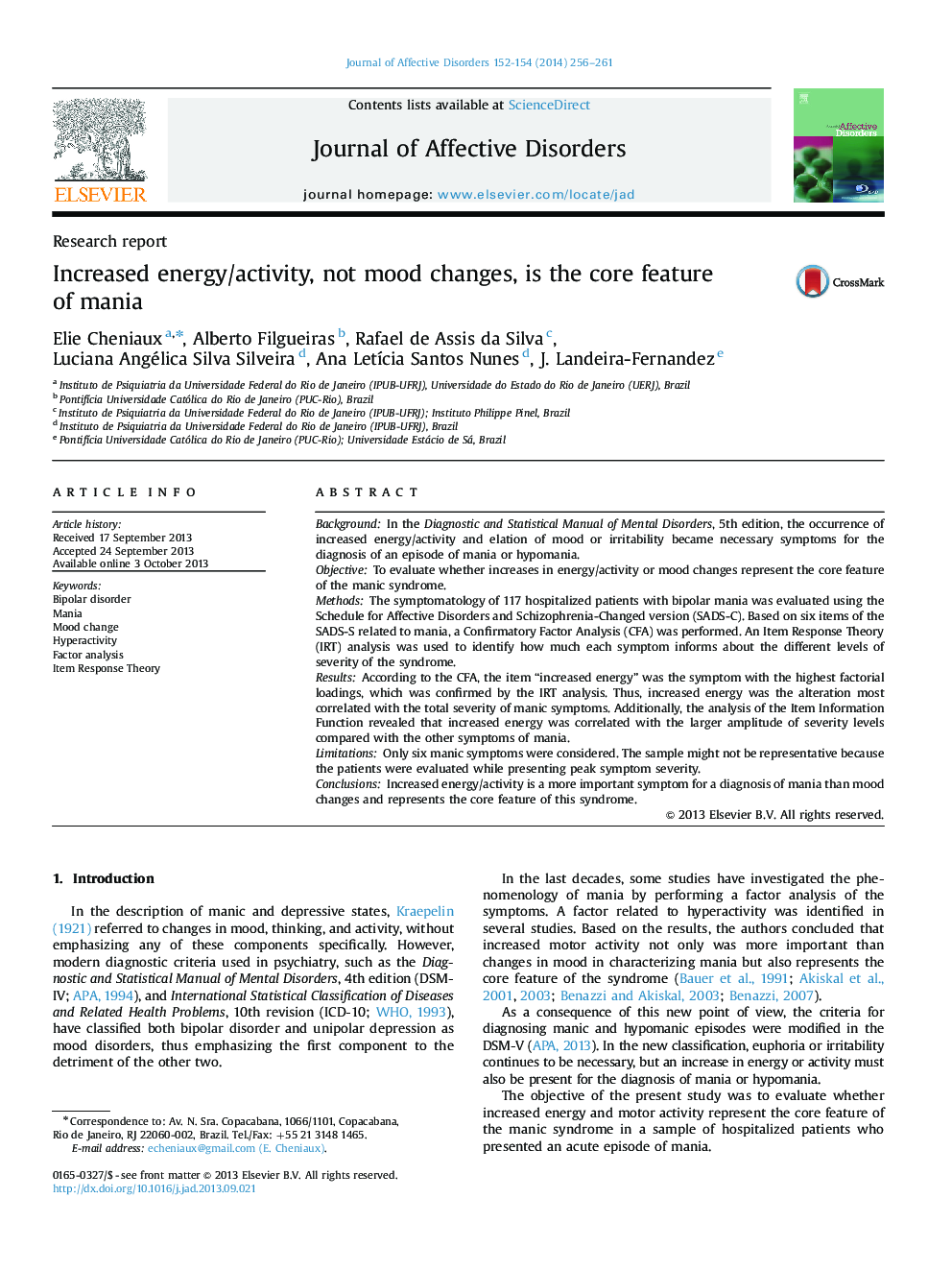| Article ID | Journal | Published Year | Pages | File Type |
|---|---|---|---|---|
| 6233162 | Journal of Affective Disorders | 2014 | 6 Pages |
BackgroundIn the Diagnostic and Statistical Manual of Mental Disorders, 5th edition, the occurrence of increased energy/activity and elation of mood or irritability became necessary symptoms for the diagnosis of an episode of mania or hypomania.ObjectiveTo evaluate whether increases in energy/activity or mood changes represent the core feature of the manic syndrome.MethodsThe symptomatology of 117 hospitalized patients with bipolar mania was evaluated using the Schedule for Affective Disorders and Schizophrenia-Changed version (SADS-C). Based on six items of the SADS-S related to mania, a Confirmatory Factor Analysis (CFA) was performed. An Item Response Theory (IRT) analysis was used to identify how much each symptom informs about the different levels of severity of the syndrome.ResultsAccording to the CFA, the item “increased energy” was the symptom with the highest factorial loadings, which was confirmed by the IRT analysis. Thus, increased energy was the alteration most correlated with the total severity of manic symptoms. Additionally, the analysis of the Item Information Function revealed that increased energy was correlated with the larger amplitude of severity levels compared with the other symptoms of mania.LimitationsOnly six manic symptoms were considered. The sample might not be representative because the patients were evaluated while presenting peak symptom severity.ConclusionsIncreased energy/activity is a more important symptom for a diagnosis of mania than mood changes and represents the core feature of this syndrome.
